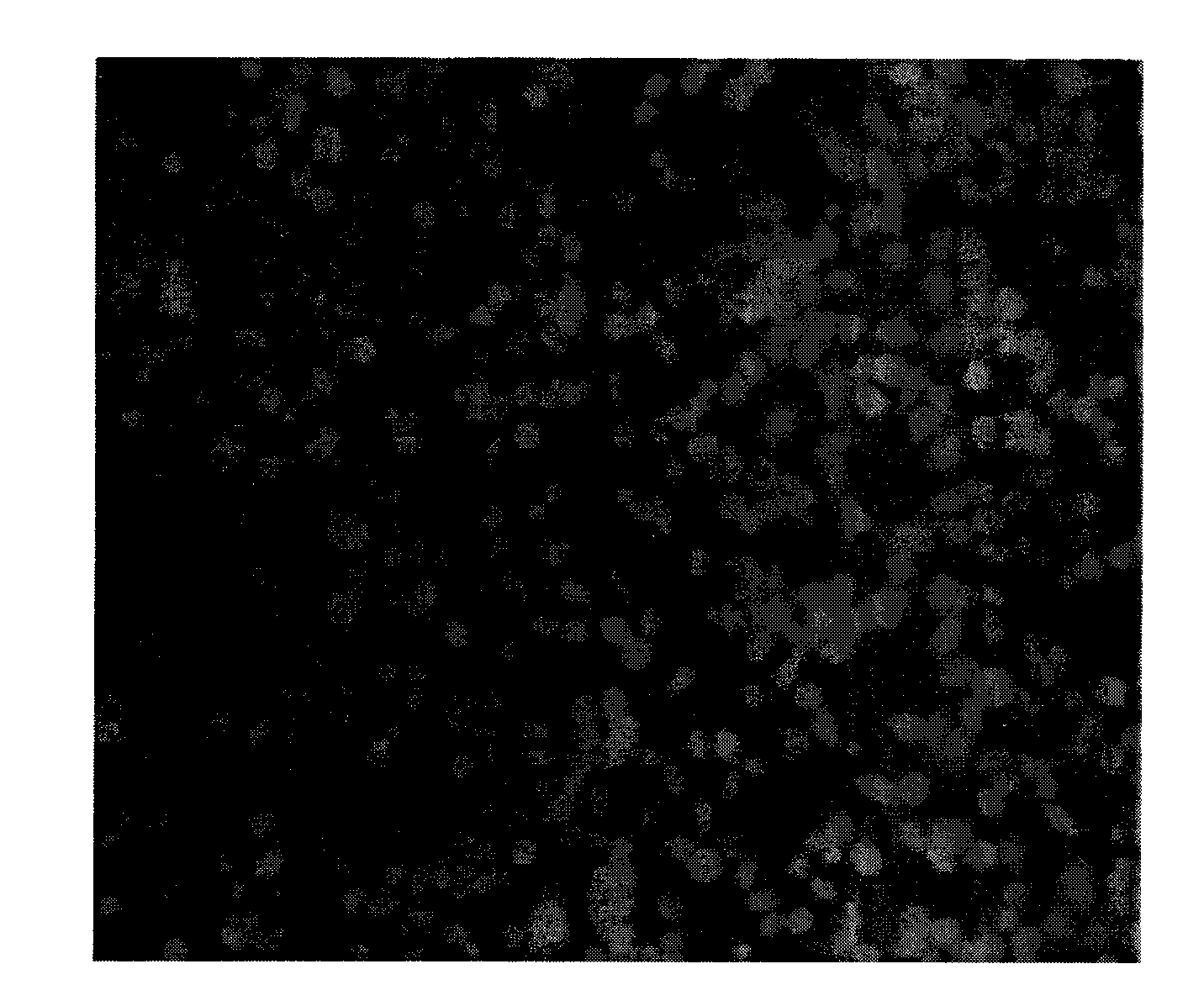Specific combined polypeptide for lung cancer, preparation and uses thereof
A technology that combines peptides and specificity, applied in the field of protein peptides, can solve the problems of limited value and non-specificity of lung cancer, and achieve good tumor targeting, high specificity, and sensitive tumor diagnosis
- Summary
- Abstract
- Description
- Claims
- Application Information
AI Technical Summary
Problems solved by technology
Method used
Image
Examples
Embodiment 1
[0045] Example 1 Screening of polypeptides specifically binding to lung cancer cells
[0046] In this example, a phage display random 12-peptide library is used for subtractive screening of polypeptides that specifically bind to lung cancer cells, and the specific steps are as follows:
[0047] After human lung cancer cells (NCI-H1299) and human embryonic lung fibroblasts (MRC-5) were digested with trypsin, the cell density was adjusted, and seeded in 60×15mm cells pre-coated with poly-lysine 2 In the culture dish, when the cells grow to 80%-90% confluence, they are used for screening.
[0048] Take the above NCI-H1299 cells, culture them with serum-free DMEM, add bovine serum albumin BSA to block, and then add 10 μl phage peptide library (Ph.D.-7 of NEW ENGLAND Biolabs TM Phage Display Peptide Library Kit phage original library), after incubation for 1 h, remove the supernatant, wash 3 times with washing solution TBST (Tween-20 concentration is 0.1 volume %), add glycine elu...
Embodiment 2
[0053] The mensuration of embodiment 2 phage titers
[0054] In Example 1, the phage obtained in each round of screening was diluted 100 times with LB medium, and 10 μL of the diluted phage was mixed with 200 μL of E. LB top layer agar (top layer agar: each liter contains 10g Bacto-Tryptone, 5g yeast extract, 5g NaCl, 1g MgCl2.6H20 and 7g agar powder, after autoclaving, it will be divided into 3ml / tube, and it will be heated and melted when used) and then quickly poured into LB solid plates containing IPTG / Xgal, overnight, count blue plaques.
[0055] Calculation formula: phage titer (pfu / 10 μL) = number of plaques × dilution factor, that is, phage forming units per 10 μL.
[0056] Enrichment of phage polypeptides specifically bound to lung cancer cells: As shown in Table 1, there were about 10 positive phage clones binding to NCI-H1299 after three rounds of screening. 2 double enrichment phenomenon.
[0057] Table 1 Enrichment effect of subtractive screening on positive ph...
Embodiment 3
[0059] The ELISA identification of embodiment 3 phage polypeptides
[0060] Identification of positive clones of phage polypeptides specifically binding to lung cancer cells: In Example 1, after three consecutive rounds of subtractive screening of the phage peptide library, 9 phage clones were randomly selected, and the conventional method in the field-ELISA method was used to preliminarily identify the phage clones against NCI. - Affinity for H1299, A549.
[0061] NCI-H1299, human lung adenocarcinoma cells (A549) were divided into 1×10 4 The density per well was seeded in a 96-well plate and placed in CO 2 After culturing in the incubator for 24 hours, the cells were treated with serum-free for 1 hour, washed, fixed with paraformaldehyde, washed with PBS, treated with triton X-100, blocked with PBS-BSA, added the phage monoclonal of Example 1, and incubated for 2 hours ; Add HRP-anti M13 antibody, incubate at 37°C for 1 h; develop color with TMB (50 μl TMB per well, 8-15 mi...
PUM
 Login to View More
Login to View More Abstract
Description
Claims
Application Information
 Login to View More
Login to View More - R&D
- Intellectual Property
- Life Sciences
- Materials
- Tech Scout
- Unparalleled Data Quality
- Higher Quality Content
- 60% Fewer Hallucinations
Browse by: Latest US Patents, China's latest patents, Technical Efficacy Thesaurus, Application Domain, Technology Topic, Popular Technical Reports.
© 2025 PatSnap. All rights reserved.Legal|Privacy policy|Modern Slavery Act Transparency Statement|Sitemap|About US| Contact US: help@patsnap.com



